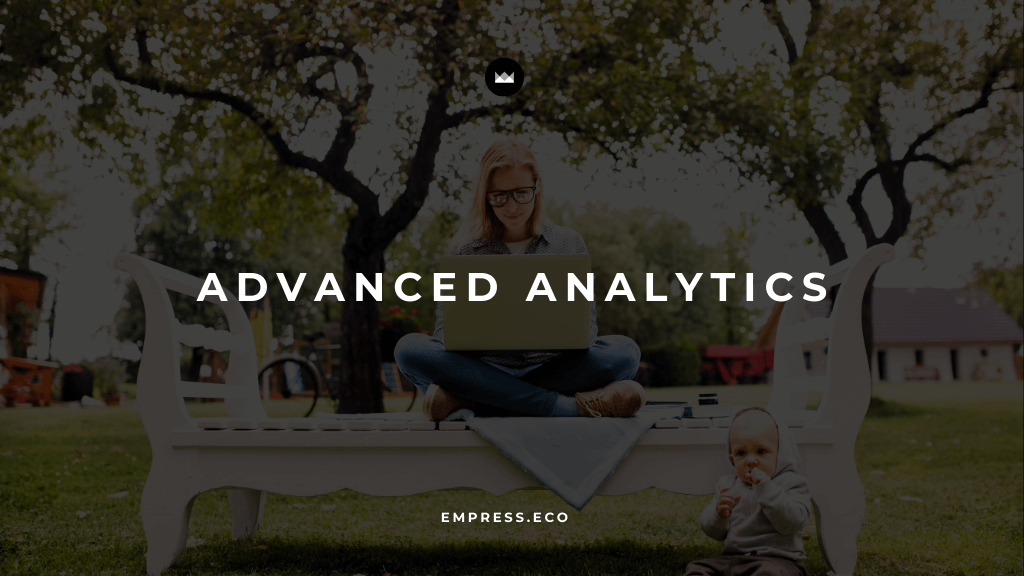
Unlock Critical Business Insights with Aria’s Data Analytics Tools
Leverage big data to gain meaningful insights, driving informed decisions and strategic growth.
Table of Contents
Businesses are sitting on a goldmine of information—data that, if properly harnessed, can fuel innovation, drive strategic growth, and provide a competitive edge. But raw data, much like crude oil, needs to be refined to extract its full value. This is where advanced analytics comes in. At Aria, we specialize in helping businesses unlock the potential of their data by turning it into actionable insights that inform decision-making and propel growth. In this blog, we’ll explore how advanced analytics can transform your data into a strategic asset, empowering you to make informed decisions and drive sustainable growth.
Understanding Advanced Analytics
Before diving into the benefits, let’s clarify what advanced analytics really means. Advanced analytics refers to a set of sophisticated techniques and tools used to analyze complex data sets. These techniques go beyond basic data analysis, allowing businesses to uncover deeper insights, predict future trends, and make more informed decisions.
Some of the key techniques under the umbrella of advanced analytics include:
- Predictive Analytics: This involves using historical data to make predictions about future events. For instance, a retailer might use predictive analytics to forecast sales trends based on past performance and seasonal patterns.
- Machine Learning: A subset of AI, machine learning enables systems to learn from data and improve their performance over time without being explicitly programmed. Businesses use machine learning to automate processes, optimize operations, and even personalize customer experiences.
- Data Mining: This technique involves exploring large data sets to discover patterns and relationships. Data mining is often used in marketing to identify customer segments and target them with tailored campaigns.
- Statistical Analysis: By applying statistical methods to data, businesses can uncover trends and correlations that inform decision-making. For example, statistical analysis might reveal the factors that most influence customer satisfaction, allowing a company to focus on improving those areas.
Advanced analytics provides a comprehensive toolkit for making sense of the vast amounts of data that businesses generate every day. But it’s not just about the tools—it’s about how you use them to drive real value.
Key Benefits of Advanced Analytics
When effectively implemented, advanced analytics offers a wealth of benefits that can transform the way your business operates. Let’s explore some of the most significant advantages:
- Informed Decision-Making
At the heart of advanced analytics is the ability to make better decisions. By leveraging data-driven insights, businesses can move away from gut-feeling decisions and instead base their strategies on concrete evidence. This not only increases the accuracy of decisions but also boosts confidence among stakeholders.
For example, consider a manufacturing company facing declining product quality. Instead of guessing the cause, the company can use advanced analytics to analyze production data, identify the root causes of quality issues, and implement targeted improvements. This data-driven approach leads to more effective solutions and, ultimately, better outcomes.
- Proactive Strategy Development
One of the most powerful aspects of advanced analytics is its ability to predict future trends and behaviors. Predictive analytics, for instance, can forecast customer demand, allowing businesses to adjust their inventory levels proactively. This proactive approach not only reduces costs associated with overstocking or stockouts but also enhances customer satisfaction by ensuring that products are available when and where they’re needed.
In the financial services industry, predictive analytics can be used to identify potential risks before they materialize. By analyzing patterns in financial data, banks and insurance companies can detect early warning signs of fraud or default, allowing them to take preventive measures.
- Enhanced Operational Efficiency
Advanced analytics isn’t just about making better decisions—it’s also about making your operations more efficient. By identifying inefficiencies and bottlenecks within your processes, analytics can help streamline operations, reduce costs, and improve productivity.
For instance, in the logistics industry, advanced analytics can optimize delivery routes based on factors like traffic patterns, weather conditions, and delivery windows. This not only speeds up delivery times but also reduces fuel consumption and operational costs.
- Personalized Customer Experiences
Today’s customers expect personalized experiences, and advanced analytics makes this possible at scale. By analyzing customer data—such as purchase history, browsing behavior, and social media activity—businesses can gain a deep understanding of individual preferences and tailor their offerings accordingly.
E-commerce companies, for example, use advanced analytics to recommend products to customers based on their past purchases and browsing history. This level of personalization not only boosts sales but also increases customer loyalty by making customers feel understood and valued.
Implementing Advanced Analytics for Actionable Insights
So, how do you go from raw data to actionable insights? Implementing advanced analytics requires a strategic approach. Here are some key steps to consider:
- Define Clear Objectives
Before you start analyzing data, it’s important to have clear objectives in mind. What do you want to achieve with your analytics initiatives? Whether it’s improving customer retention, increasing operational efficiency, or enhancing product development, your goals will guide the analytics process and ensure that your efforts are aligned with your business priorities.
For example, if your goal is to reduce customer churn, you might focus on analyzing customer behavior data to identify the factors that lead to churn and develop strategies to address them. By having a clear objective, you can ensure that your analytics efforts are focused and effective.
- Invest in the Right Tools and Technologies
Choosing the right tools and technologies is crucial to the success of your analytics initiatives. Depending on your business needs, this might include cloud-based analytics platforms, machine learning tools, or data visualization software.
For instance, if you’re dealing with large volumes of data, you might opt for a cloud-based platform that can scale with your needs. If you’re looking to automate decision-making processes, machine learning tools might be the way to go. Whatever your requirements, it’s important to choose tools that integrate well with your existing systems and provide the functionality you need.
- Build a Skilled Analytics Team
Even the best tools are only as good as the people using them. To effectively manage and interpret complex data sets, you’ll need a team of skilled data scientists, analysts, and IT professionals. These experts will be responsible for extracting meaningful insights from your data and turning them into actionable recommendations.
For example, a data scientist might use machine learning algorithms to predict customer behavior, while an analyst interprets the results and provides recommendations to the marketing team. By building a skilled analytics team, you can ensure that your data is being used to its full potential.
- Ensure Data Quality and Governance
Data is the foundation of your analytics efforts, so it’s essential to ensure that your data is accurate, consistent, and secure. Implementing robust data governance practices will help you maintain high data quality, ensuring that your analytics outcomes are reliable and actionable.
For instance, you might establish data quality standards, conduct regular audits, and implement security measures to protect sensitive information. By ensuring data quality and governance, you can trust the insights generated by your analytics tools.
- Foster a Data-Driven Culture
To truly harness the power of advanced analytics, it’s important to foster a culture that values data-driven decision-making. This means encouraging employees at all levels of the organization to use data in their daily work and providing them with the training and support they need to do so effectively.
For example, you might offer workshops on data literacy, provide access to analytics tools, and recognize employees who use data to drive successful outcomes. By fostering a data-driven culture, you can ensure that your analytics initiatives have a lasting impact on your organization.
Challenges and Considerations
While the benefits of advanced analytics are significant, there are also challenges to be aware of. Here are a few considerations to keep in mind:
- Data Privacy and Compliance
With great data comes great responsibility. As you collect and analyze data, it’s essential to ensure that you’re complying with data privacy regulations, such as GDPR or CCPA. This involves implementing strong security measures to protect sensitive information and staying informed about legal requirements.
For instance, if you’re collecting customer data, you’ll need to obtain consent and ensure that the data is stored securely. You’ll also need to have processes in place to respond to data access requests and report breaches if they occur.
- Integration with Existing Systems
Integrating advanced analytics solutions with your existing IT infrastructure can be complex. It’s important to carefully plan your integration strategy to ensure that your new tools work seamlessly with your current systems.
For example, you might need to customize your analytics platform to work with your existing CRM or ERP systems. This might involve working with IT to develop integration plans, testing the systems thoroughly, and providing training to ensure that users can effectively navigate the new tools.
- Continuous Improvement
Advanced analytics is not a one-and-done solution—it’s an ongoing process that requires continuous evaluation and adaptation. As your business evolves, so too should your analytics strategies. This means regularly reviewing your analytics processes, updating your tools and technologies, and staying informed about new developments in the field.
For instance, as new machine learning algorithms are developed, you might find that they offer more accurate predictions or faster processing times than your current models. By staying up-to-date with the latest advancements, you can ensure that your analytics efforts continue to deliver value.
Real-World Applications of Advanced Analytics
To see how advanced analytics can be applied in the real world, let’s look at some examples across different industries:
- Retail: Retailers use advanced analytics to optimize inventory management, forecast demand, and personalize marketing campaigns. By analyzing sales data, customer preferences, and market trends, they can make more informed decisions that drive sales and improve customer satisfaction.
- Healthcare: In the healthcare industry, advanced analytics is used to improve patient outcomes, optimize resource allocation, and enhance operational efficiency. For example, hospitals might use predictive analytics to forecast patient admissions and ensure that they have the necessary staff and resources available.
- Finance: Financial institutions use advanced analytics to detect fraud, assess credit risk, and optimize investment strategies. By analyzing transaction data, market trends, and customer behavior, they can make more informed decisions that minimize risk and maximize returns.
- Manufacturing: In manufacturing, advanced analytics is used to optimize production processes, reduce waste, and improve product quality. By analyzing production data, manufacturers can identify inefficiencies, predict equipment failures, and implement process improvements that enhance efficiency and reduce costs.
Conclusion
Turning data into actionable insights with advanced analytics is more than just a strategy—it’s a necessity for businesses that want to thrive in today’s competitive landscape. By leveraging advanced analytics techniques, you can unlock the full potential of your data, driving informed decisions, enhancing efficiency, and maintaining a competitive edge.
At Aria, we’re committed to helping businesses harness the power of advanced analytics. Whether you’re just getting started or looking to take your analytics efforts to the next level, we’re here to guide you every step of the way.
So, are you ready to transform your data into a strategic asset? Let’s work together to turn your data into actionable insights that drive growth and innovation.
Empress Newsletter
Join the newsletter to receive the latest updates in your inbox.







